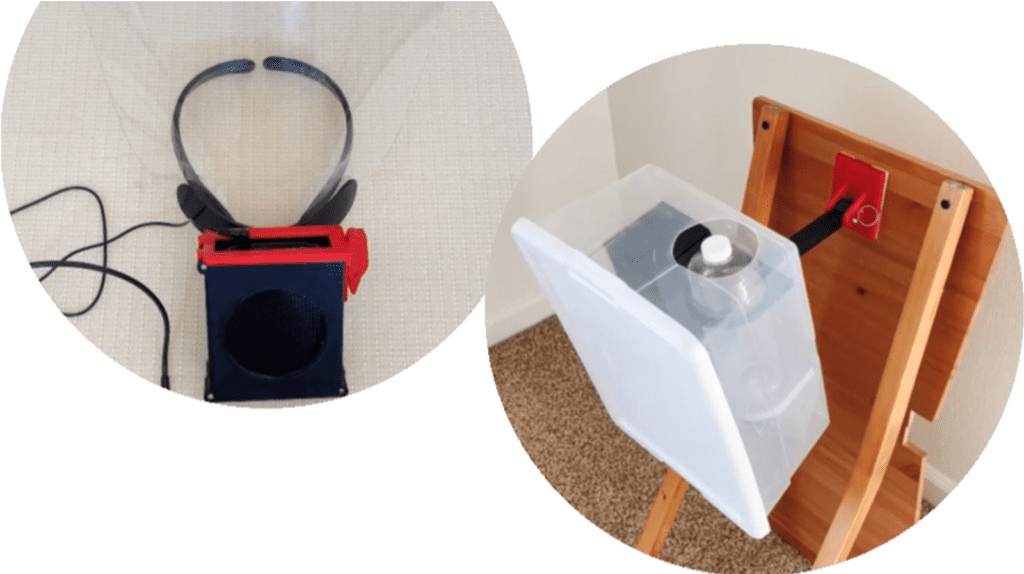Our Team

Janis Iourovitski
General Engineer
Janis is a graduating senior in General Engineering emphasizing in Bioinformatics. She contributed her knowledge in needs finding and product design to help develop the microphone and speaker face shield. After graduation, she will be attending Johns Hopkins University to pursue a master’s degree in Bioengineering Innovation and Design.

Emma Oneto
Mechanical Engineer
Emma is a graduating senior majoring in Mechanical Engineering. She designed and manufactured the housing and mounting for the automatic disinfecting spray. After graduation, Emma will intern in the HVAC industry and apply to mechanical engineering masters programs abroad.

Matteo Marsella
Mechanical Engineer
Matteo is a fifth year Mechanical Engineering major and History minor. He designed and manufactured the face shield’s speaker housing and the automatic disinfecting spray’s electronics. Following graduation, he will be returning to Southern California.
Acknowledgements
This project is supported by John and Connie Nielsen. We would like to thank Dr. Jim Widmann, Dr. Vladimir Prodanov, and Karla Carichner for their invaluable advising. Special thanks to Scott Mangin, Ethan Cruse, Craig Icban, and Michael Conn.
Our Project's Videos
Our Project's Digital Poster
Problem Statement
The project objective is to design and build a toolbox to enable k-12 teachers to feel safe in the classroom during the COVID-19 pandemic so that they can return to in-person teaching.
Background
We identified over 100 individual needs faced by teachers returning to the classroom and examined return to in person education guidelines to identify two major problem areas:
- Face coverings
- High contact surface contamination
Face coverings are crucial to preventing the spread of COVID-19 however they make it challenging and exhausting for teachers to speak loudly in a classroom for the duration of a full school day.
Surfaces such as doorknobs and faucets are frequently touched by many people in a classroom. High contact surfaces are infrequently sanitized but pose as a vector for disease transmission.
Engineering Specifications
Customer Requirement | Engineering Specification |
Low cost | Cost < $40 |
Battery life last a school day | Battery life > 8 hours |
Disinfecting Spray | |
Applicable for doorknobs & faucets | Spray area > 4″ L x 2″ W |
Minimize frequency of refilling sanitizer | Refill < 1 time per week |
Easy to refill | Minimize steps required to refill |
Easy to set up in various parts of classroom | Mountable to common classroom surfaces (doors, counters, desks, etc.) |
Face Shield | |
Comfortable to wear for extended use | Weight < 1.85 lb & comfortable supports |
Volume loud enough to hear at the back of a classroom | Speaker volume 0 dB – 90 dB |
Audio is understandable | Mic detects 15 Hz – 17 kHz |
Toolbox Approach

The toolbox approach provides a comprehensive solution to address both the sanitation and face covering problems. Teachers can use the product suite to ensure they feel safe from all directions.
Conceptual Design
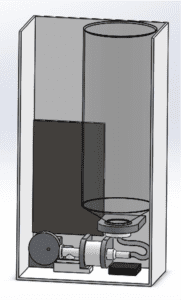
Automatic disinfecting spray
Motor & cam actuate a nozzle to spray disinfectant
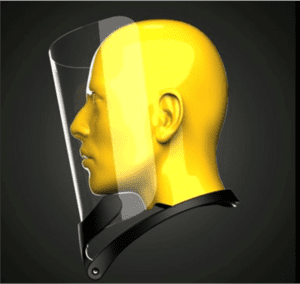
Microphone & speaker face shield
Mic & speaker mount to a shoulder face shield
Automatic disinfecting spray design
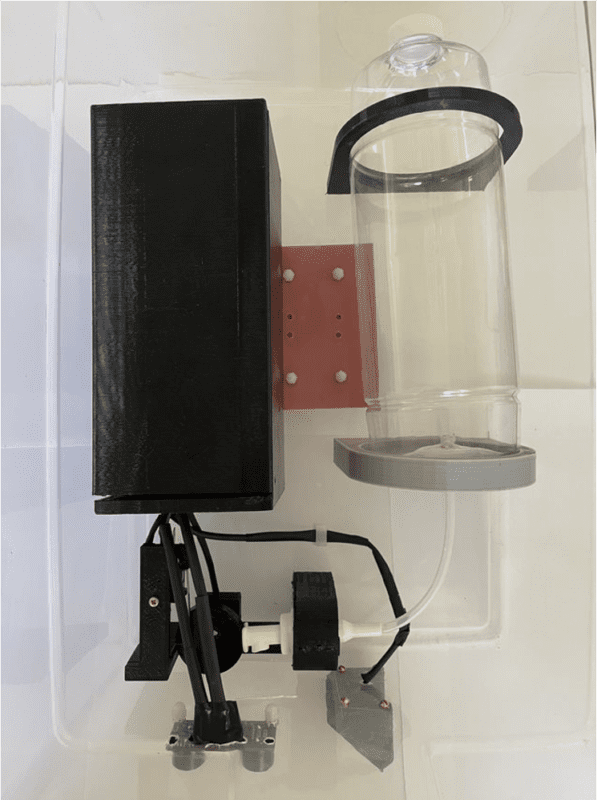
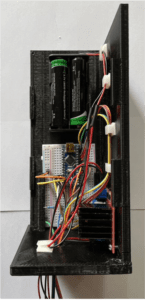
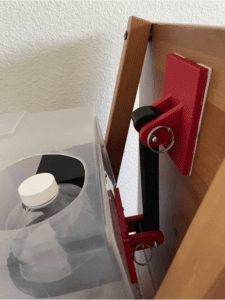
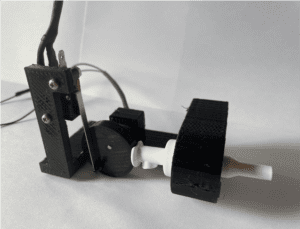
Mic & Speaker Face shield
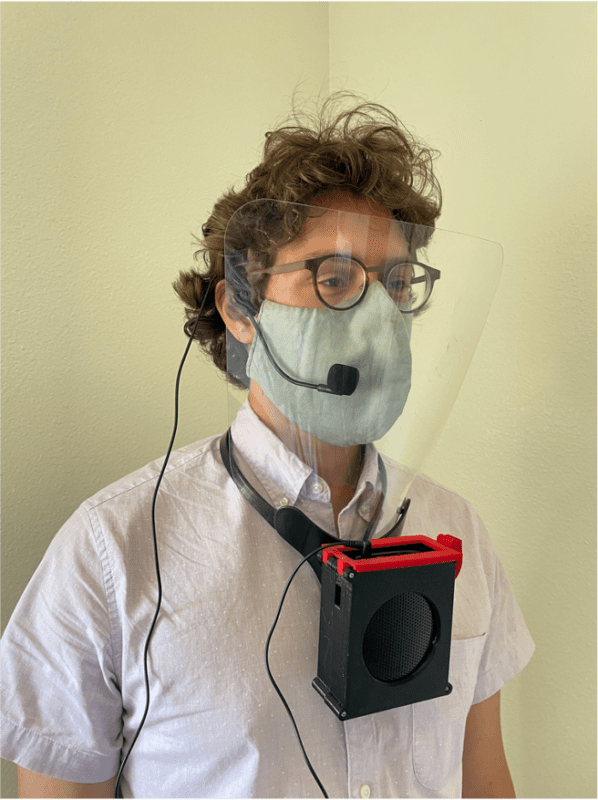
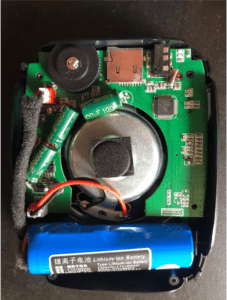
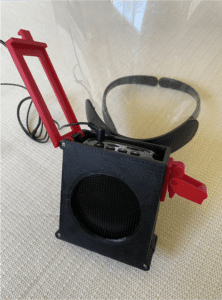
Manufacturing

We purchased most of our components from vendors. We used 3D printing to manufacture our own custom-designed components.
Electronics and Software
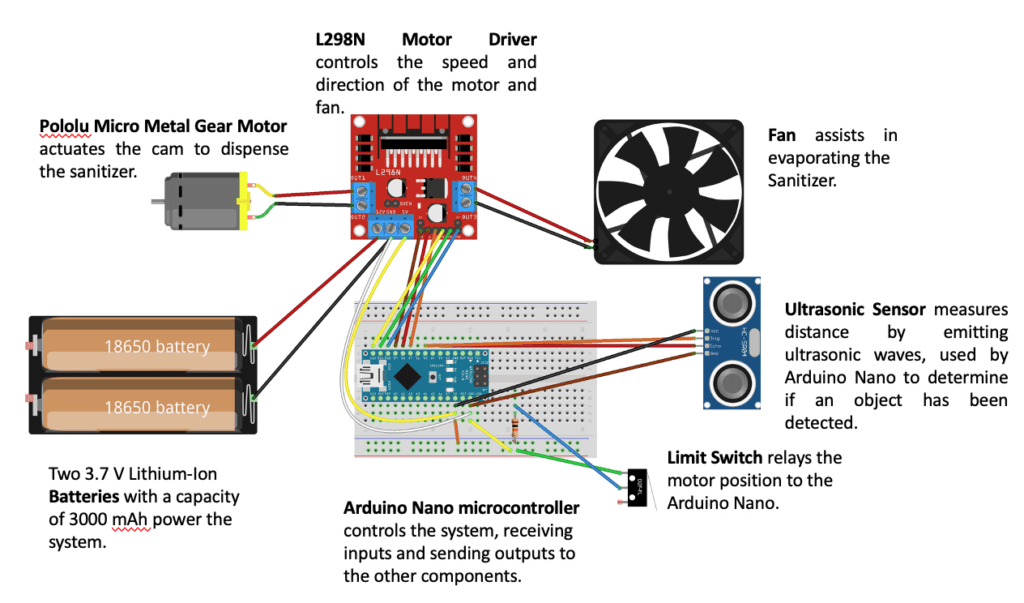
Testing
To test the toolbox solution we completed component testing, assembly testing, performance testing, and user testing with k-12 teachers.
Usability Testing
Two teachers wore the face shield periodically during the school day. The face shield was tested in both large and small group settings. The volume level was adjusted to fit the teachers’ preferences
We had our friends and roommates operate the automatic disinfecting spray running through the calibration, refilling, mounting, and battery recharging processes.
Specification | Target Value | Measured Value |
Disinfecting Spray | ||
Spray area | 4″ x 2″ min | 4″ x 3.5″ |
Spray volume | 0.04 oz max | 0.02 oz |
Spray distance | 3″ min | 4.5″ |
Sensing distance | 6 in min | > 6 in |
Mounting capacity | 4.5 lb min | 4.5 lb |
Battery life | 8 hours min | 72 hours |
Cost | $40 max | $55 |
Face Shield | ||
Output power | 10 W | 10 W |
Output Impedance | 4 ohms | 4 ohms |
Frequency Range | 50 Hz– 70 kHz | 90 Hz – 18 kHz |
Use time | 8 hours min | 5 hours |
Cost | $40 max | $50 |
Weight | 1.85 lb max | 1.2 lb |
Recommendations
We got feedback from the teachers and friends who conducted usability testing regarding areas to improve our toolbox. Based on their feedback, we suggest reducing the bulkiness of the face shield making the microphone and speaker less obtrusive to the overall design. For the disinfecting spray, we suggest reducing leaking from the nozzle, making the system mounting easier to adjust, and reducing the box’s overall size.
Additional testing is recommended to ensure the toolbox functions in all school settings. Additional tests include assess the feedback of the face shield in an auditorium, an acoustically challenging environment, and mounting the disinfecting spray above sink faucets to test the mounting capabilities.
Conclusions
The toolbox solution effectively equipped teachers with the resources to manage their safety and comfort when returning to in person education during the COVID-19 pandemic. The toolbox meets the goal of executing safety procedures while allowing teachers to focus on teaching.
The face shield amplifies the user’s voice reducing the strain of talking loudly over a face mask for extended periods of time. The disinfecting spray sanitizes surfaces below it after someone touches the surface. The responses from our user testing indicated the face shield was easy to operate and effective. While the disinfecting spray could use improvements in usability, it functioned as expected.

